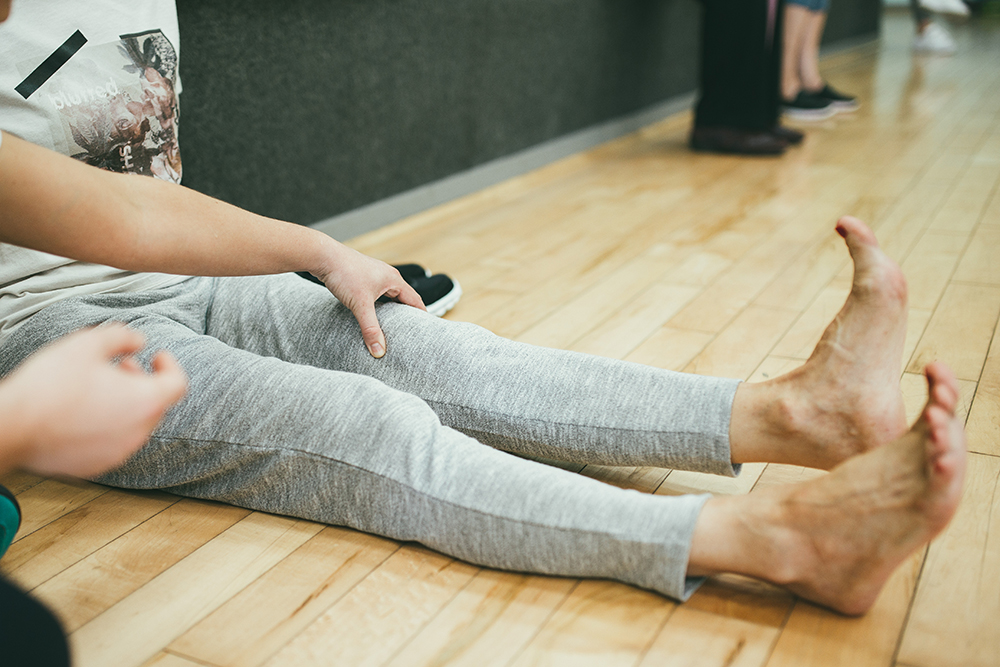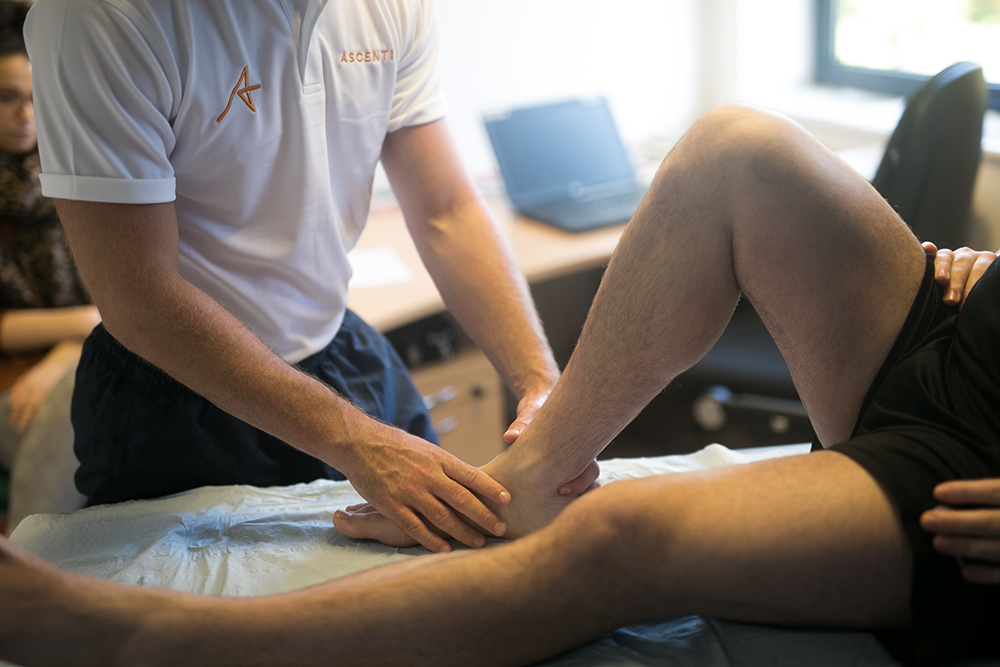We use the term acute to describe any recent or short term pain, illness or injury, such as a sprained ankle.
The following tips will help your joint to recover as quickly as possible and get you back on top form.
Why are my joints painful?
Most of the time painful joints occur because of irritation from overloading, twisting or jarring.
There could be many factors that cause this, such as walking on uneven surfaces if it’s hip/knee or ankle pain, or you may have the early stages of some wear and tear affecting the joint.
On rare occasions a painful joint can be a sign of something more serious (see below for further details), but in the vast majority of cases with the right self-management and treatment your joint will recover and feel better soon.
Five steps for managing a painful joint
1. Avoid aggravation
Do not expose your joint to any further or unnecessary aggravation. For example, use a walking stick or a single crutch in the opposite hand to the side that’s painful if the pain is in the hip, knee, ankle or foot.
If the painful joint is in your arm, try and use the other arm for heavier tasks. If you have severe back pain you should avoid heavy lifting, twisting and bending, but keep moving as much as you are able to.
Avoiding aggravation does not mean complete rest - movement is good for you but you should focus on not overloading the joint and completing activities that you are able to.
2. Pain medication
Discuss an over-the counter anti-inflammatory and/or painkiller with your local pharmacist. This can help you to get comfortable and to reduce inflammation.
3. Ice the area
Use an ice pack or a bag of frozen vegetables wrapped around the joint for 5 minutes at a time, every 2 hours, during the first 3 days after injury, increasing to up to 20 minutes 3-4 times a day thereafter. Remember to use a wet cloth to wrap the ice bag in and put some olive oil or moisturiser on your skin to prevent the ice from sticking.
If you have any numbness or sensation changes in the area, or if you are diabetic, please discuss icing the area with your GP or physiotherapist first.
Read more about using ice and heat at home
4. Use temporary support
Splints, braces, slings and supports can be helpful within the first five days of a joint becoming very painful and offer you comfort, but these should only be used on a temporary basis.
It’s better for your own muscles to support the joint than to become dependent on a device or brace.
5. Move the joint
As soon as you feel able to, start moving the joint through its full range of movement. For example, if you have hurt your ankle point and rotate your foot in different directions while it is elevated. Stay within your pain threshold and don’t push yourself too hard.

You can use your hands to help if needed and try to do this without bearing any weight on the joint affected to start with.
This can be done 2-3 times a day for a few minutes and should not aggravate the pain for more than a few minutes. If the joint seems sorer afterwards, stick with steps 1-4 for a day or two and try again.
When to seek additional help
If you follow these five steps and don’t see any improvement within 3-4 weeks then you should see your GP or book an appointment with a physiotherapist.

They will be able to assess the area and discuss any further treatment that may be needed to progress your recovery.
When to seek urgent medical attention
Sometimes a painful joint can be the sign of an underlying problem that may need medical input urgently.
If you experience any of the below symptoms please go to a minor injuries unit or to A&E immediately.
Painful, hot, red, swollen joint with any of the following:
- Discharge or pus from a wound around the joint.
- Unable to weight bear.
- Large swelling or change in shape of the joint.
- Recent trauma or injury to the area.
- Marked restriction of movement in all directions.
- More than one joint affected.
- High body temperature or feeling unwell.
- Pins and needles or discoloured skin around the swollen joint.
- A rash around the affected area or anywhere on your body.
- If you have recently had any surgery, dental work, a chest infection, water infection or been bitten, burnt or suffered punctured skin from gardening.
- If you have diabetes, Rheumatoid Arthritis, undergoing any treatment which affects your immune system or if you have any other significant health problems.
*This information is general advice that we have found to be beneficial to the majority of patients. It is not a substitute for personalised diagnosis or treatment, and it may not cover all eventualities.
